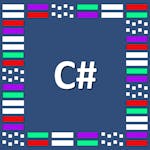.NET Terms: A to Z Glossary
Interested in .NET, but you keep seeing terms unfamiliar to you? This A-to-Z glossary defines key .NET terms you need to know.
.NET professionals are involved in developing, deploying, and maintaining software applications using the .NET framework. They utilize .NET programming languages, frameworks, and libraries to build web and desktop applications, integrate with databases, conduct testing, and collaborate with development teams.
This .NET glossary can be helpful if you want to get familiar with basic terms and advance your understanding of .NET.
.NET Terms: A to Z Glossary
Interested in .NET, but you keep seeing terms unfamiliar to you? This A-to-Z glossary defines key .NET terms you need to know.
.NET professionals are involved in developing, deploying, and maintaining software applications using the .NET framework. They utilize .NET programming languages, frameworks, and libraries to build web and desktop applications, integrate with databases, conduct testing, and collaborate with development teams.
This .NET glossary can be helpful if you want to get familiar with basic terms and advance your understanding of .NET.
.NET Terms
Assembly
An assembly is a fundamental unit of deployment and versioning. NET. It encompasses compiled code, metadata, and resources, making it self-contained. Examples of assemblies include "MyAssembly.dll" or "MyApp.exe," which encapsulate code and assets necessary for running an application.
Base Class
In object-oriented programming, a base class is a class that serves as a foundation for other classes. It provides common properties, methods, and behavior-derived classes that can inherit. For instance, the "System.Object" class is a base class in .NET, inherited by many other classes such as "System.Web.UI.Page."
Common Language Runtime (CLR)
The CLR is the heart of the .NET framework, acting as a virtual machine responsible for executing .NET applications. It offers essential services like memory management, security, and exception handling. The CLR includes components like the Garbage Collector and Just-In-Time (JIT) Compiler, which optimize code execution. Understanding the CLR's role is vital for building robust and efficient .NET applications.
Delegate
In the context of .NET, a delegate represents a reference to a method with a specific signature. Delegates are widely used for implementing event handling, callbacks, and asynchronous programming. An example of a delegate is the "EventHandler" delegate, commonly used to handle events in GUI-based applications.
Exception
Exceptions are abnormal conditions or errors that occur during program execution. In .NET, exceptions are essential for handling unexpected situations. For example, the "ArgumentException" exception is thrown when an invalid argument is passed to a method, while the "FileNotFoundException" exception occurs when a requested file cannot be found.
Framework
A framework provides developers with pre-built libraries, tools, and runtime environments to simplify application development. The .NET framework offers comprehensive functionalities, allowing developers to focus on business logic rather than reinventing the wheel. Notable examples include the .NET Framework and .NET Core, which enable building diverse applications across platforms.
Garbage Collection (GC)
Memory management is critical in any programming language. In .NET, the Garbage Collector (GC) automates memory management by reclaiming unused memory and resources. GC prevents memory leaks and reduces the burden of manual memory deallocation. As a developer, understanding how GC works and optimizing resource usage is vital for writing efficient and scalable .NET code.
Inheritance
Inheritance is a fundamental concept in object-oriented programming that allows a class (derived class) to inherit properties and behavior from another class (base class). By reusing code from existing classes, inheritance promotes code reuse, modularity, and extensibility. For instance, a class "B" can inherit from a class "A," inheriting its properties and methods while adding or modifying functionality.
Interface
Interfaces define a contract of methods, properties, and events a class must implement. They enable multiple inheritances, allowing a class to implement various interfaces simultaneously. Interfaces are crucial in achieving loose coupling, abstraction, and modular design. Examples of interfaces in .NET include "IDisposable" for releasing resources and "IEnumerable" for iterating over collections.
Just-In-Time (JIT) Compiler
The Just-In-Time (JIT) Compiler is an essential Common Language Runtime (CLR) component. It transforms Intermediate Language (IL) code generated during compilation into native machine code that the processor can execute. The JIT Compiler optimizes the code for the specific hardware environment, improving performance and reducing start-up time. Understanding the JIT compilation process is crucial for developing high-performance .NET applications.
Namespace
A namespace is a logical container that organizes related classes and prevents naming conflicts. It allows the grouping of related types and helps maintain code organization and modularity. For example, the "System.IO" namespace in .NET contains classes related to input and output operations, while the "System.Data" namespace encompasses classes for database-related functionality.
Polymorphism
Polymorphism is a powerful concept in object-oriented programming that allows objects to exhibit different behaviors based on their context. In .NET, polymorphism is achieved through method overriding and interface implementation. It enables code to work with objects of various types through a common interface or base class. Polymorphism promotes code flexibility, extensibility, and maintainability.
Property
A property is a class member that encapsulates data and provides controlled access. Properties define the state of an object and enable manipulation and retrieval of its values. In .NET, properties are often used as accessors for private fields, providing a consistent way to interact with the object's data. For example, a "Person" class may have a "Name" property with get and set accessors.
Struct
A struct is a value type in .NET that represents a lightweight structure. While similar to classes, structs have value semantics rather than reference semantics. They are often used for small data structures that need to be efficiently copied. An example of a struct in .NET is the "Point" struct in the "System.Drawing" namespace, which represents a coordinate point in a two-dimensional plane.
Object-Oriented Programming (OOP)
Object-Oriented Programming (OOP) is a programming paradigm centered around the concept of objects, which are instances of classes. OOP in .NET allows developers to encapsulate data and behavior within objects, promoting code reusability, modularity, and maintainability. Understanding OOP principles such as encapsulation, inheritance, and polymorphism is essential for effective .NET development.
Namespace Alias
In .NET, a namespace alias provides an alternate name for a namespace to avoid naming conflicts or to simplify usage. It allows developers to use shorter or more descriptive names when referencing namespaces. For instance, using the "using" directive, we can create an alias for a namespace like: "using ProjectName = CompanyName.ProductName;".
Query
In .NET, a query refers to instructions that retrieve and manipulate data from a data source. LINQ (Language Integrated Query) is a powerful feature in .NET that allows developers to write queries against various data sources, such as databases, collections, or XML files. LINQ provides a consistent syntax for querying data, making it easier to work with diverse datasets.
Reflection
Reflection is a powerful feature in .NET that enables programs to examine and modify their structure and behavior at runtime. It allows developers to dynamically discover and interact with types, properties, methods, and other members of classes. Reflection is commonly used for tasks like dynamic loading of assemblies, creating instances of classes, and invoking methods based on runtime conditions.
Static Class
A static class in .NET cannot be instantiated and contains only static members, such as methods, properties, and fields. Static classes serve as containers for shared utility functions or constants. Static Class: A static class in .NET cannot be instantiated and contains only static members, such as methods, properties, and fields. Static classes serve as containers for shared utility functions or constants that do not require instance-level state. They provide a convenient way to organize and access standard functionality without needing object instantiation. The "System.Math" class is an example of a static class in .NET, offering mathematical functions like trigonometry and logarithms.
Type
In .NET, a type represents a classification that defines the characteristics and behavior of a data element or object. Types can be value types or reference types. Examples of types in .NET include fundamental types like "String" and "Integer," as well as user-defined types such as classes and structs.
Unboxing
Unboxing converts a boxed value type (an object that encapsulates a value type) back to its original value type. When a value type is boxed, it is wrapped inside a thing to be stored in a reference type variable. Unboxing is necessary when retrieving the original value from the boxed object. For example, an integer can be unboxed from an object using the appropriate casting operation.
Virtual Method
A virtual method is a method in a base class that can be overridden in derived classes. It enables polymorphism and allows derived classes to implement the method. Virtual methods are declared using the "virtual" keyword in the base class and can be overridden using the "override" keyword in the derived class.
Web Application
A web application is accessed through a web browser or web service. In .NET, web applications can be built using frameworks like ASP.NET. They enable creation of interactive and dynamic websites that can interact with databases, handle user input, and provide rich user experiences.
XML (eXtensible Markup Language)
XML is a markup language for structuring, storing, and transporting data. In .NET, XML is commonly used for tasks such as data interchange, configuration files, and web service communication. XML's flexibility and human-readable nature make it a popular choice for representing structured data in various applications.
Yield
The yield keyword in C# is used in iterator methods to enable the deferred execution of a sequence. It allows the method to return elements one at a time instead of generating the entire sequence simultaneously. This is particularly useful when working with large collections or when the elements are generated dynamically. The yield keyword simplifies the implementation of custom iterators in. NET.
Zero Garbage Collection
Zero Garbage Collection is an optimization technique in .NET that aims to minimize the frequency of garbage collection cycles. By promoting object reuse and minimizing unnecessary memory allocations, developers can reduce the impact of garbage collection on application performance. Zero Garbage Collection helps optimize memory usage and enhance the overall efficiency of .NET applications.
Conclusion
Congratulations on exploring the A-Z glossary of .NET terms! Understanding these essential terms and concepts is crucial for anyone venturing into .NET development. With this newfound knowledge, you are now equipped to dive deeper into the world of .NET, build robust applications, and leverage the framework's power. Keep expanding your understanding and stay curious as you continue your development journey.
Learn in-demand .NET skills from industry leaders.
.NET Courses | IT Courses | C# Courses | Entity Framework Courses | Web API Courses | Angular Courses | Object Oriented Programming Courses | REST API Courses
 Join a community of over 100 million learners from around the world
Join a community of over 100 million learners from around the world Learn from more than 200 leading universities and industry educators.
Learn from more than 200 leading universities and industry educators. 70% of all learners who have stated a career goal and completed a course report outcomes such as gaining confidence, improving work performance, or selecting a new career path.
70% of all learners who have stated a career goal and completed a course report outcomes such as gaining confidence, improving work performance, or selecting a new career path.- 100% online
- Flexible schedule
- Mobile learning
- Videos and readings from professors at world-renowned universities and industry leaders
- Practice quizzes
Can’t decide what is right for you?
Try the full learning experience for most courses free for 7 days.Register to learn with Coursera’s community of 87 million learners around the world




